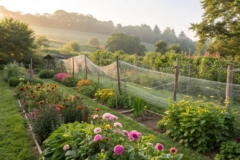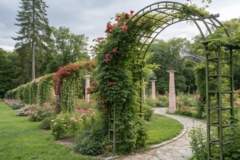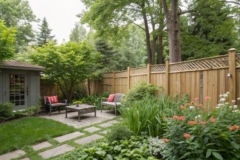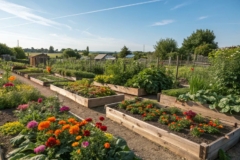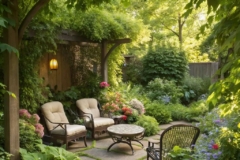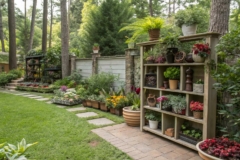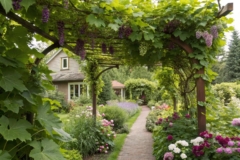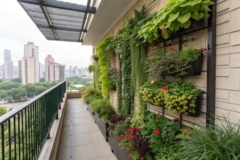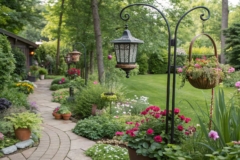1. DIY PVC Pipe Crop Cage
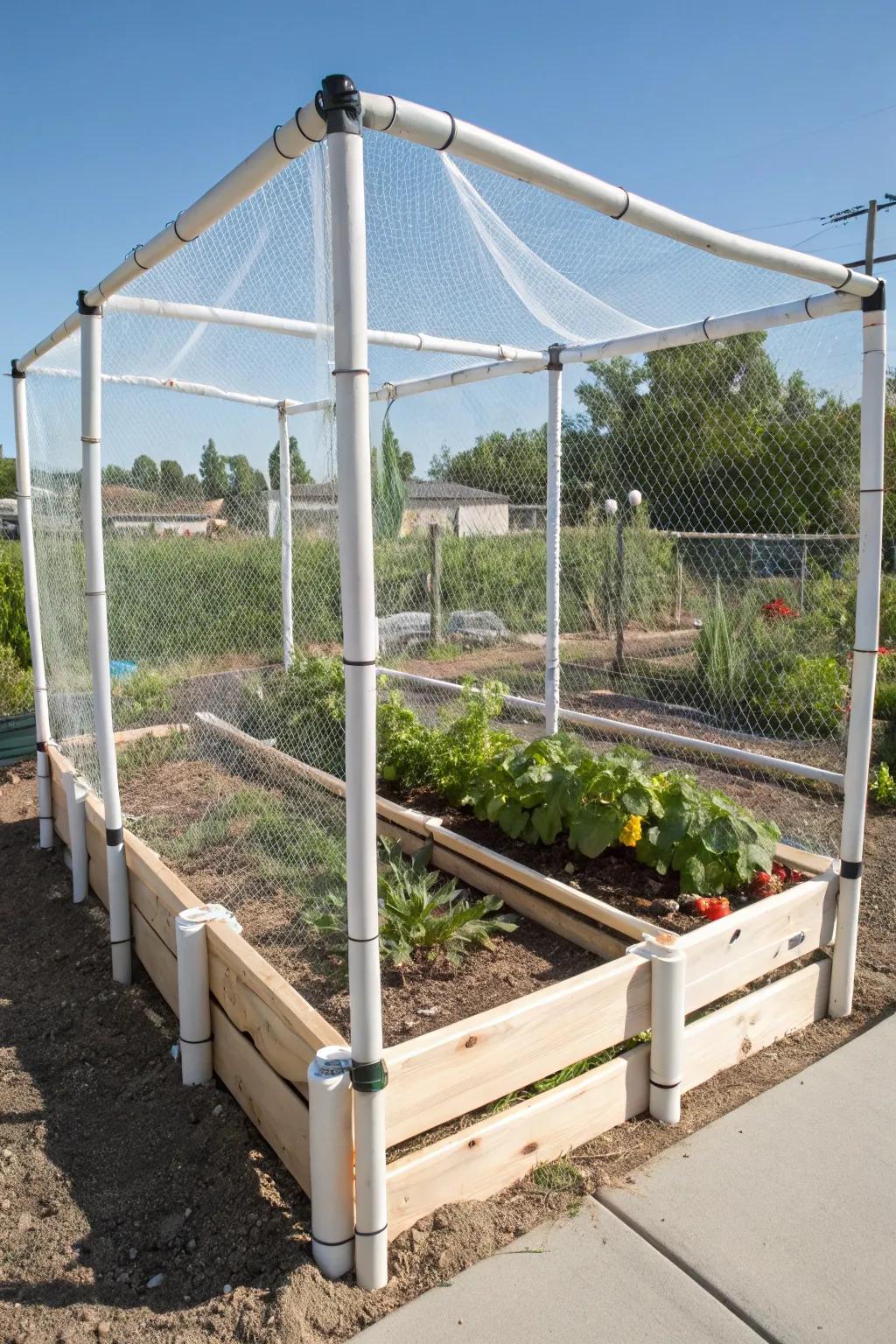
One of my favorite projects was building a PVC pipe crop cage. It’s lightweight, easy to assemble, and can be customized to fit any garden size.
A few suggestions:
- PVC Pipes: Build your customized crop cage effortlessly with durable and lightweight PVC pipes.
- Garden Netting: Protect your plants from pests with easy-to-install garden netting over your crop cage.
- PVC Pipe Connectors: Securely join your PVC pipes with reliable connectors for a sturdy crop cage structure.
2. Weather-Resistant Netting
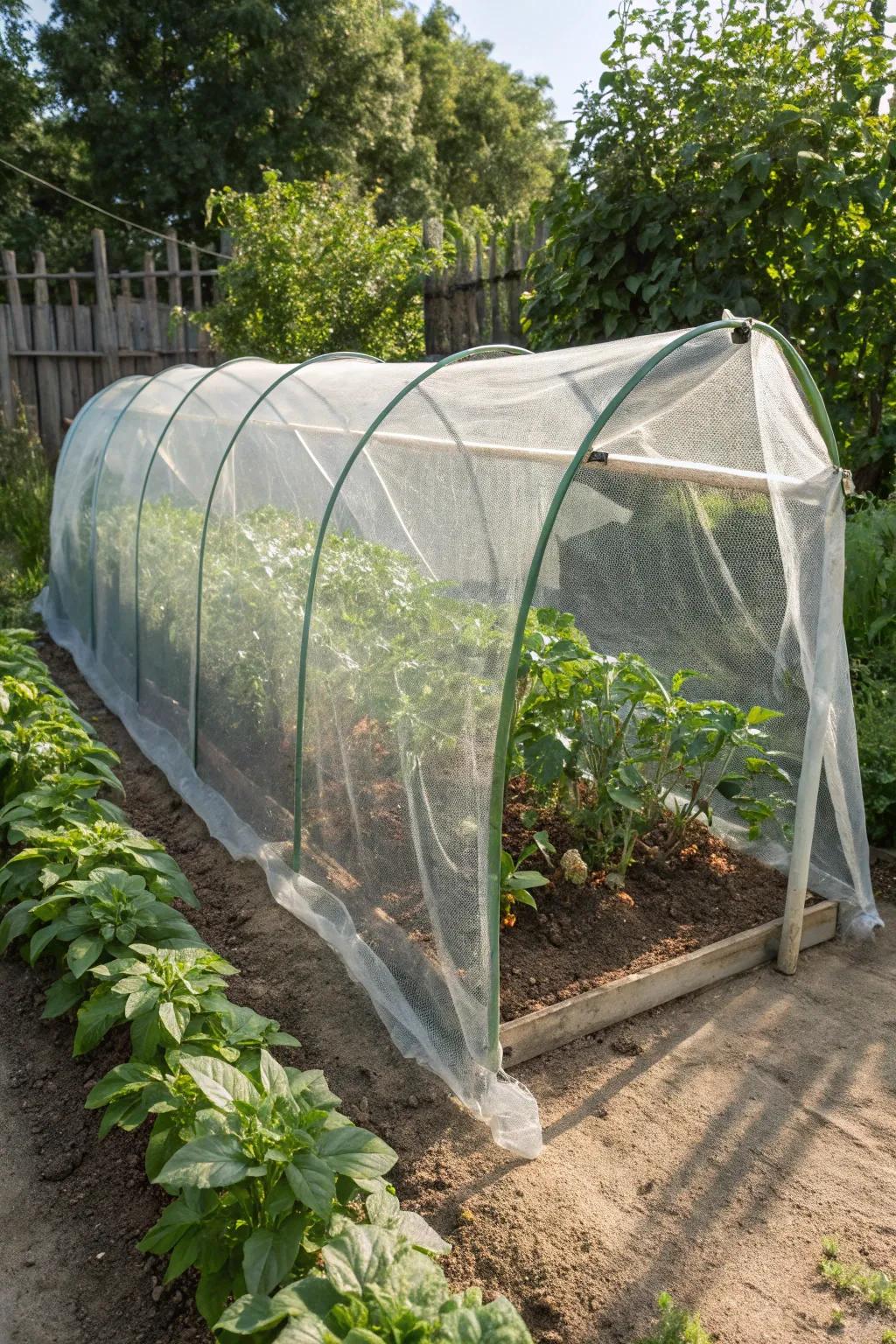
When it comes to weather protection, weather-resistant netting is essential. It shields my plants from harsh elements while letting sunlight through.
You might like:
- Heavy-Duty Garden Netting: Protect your crops from harsh weather while maintaining sunlight exposure with durable garden netting.
- UV-Stabilized Plant Cover: Ensure your plants thrive by shielding them with UV-stabilized netting, perfect for every season.
- Flexible Greenhouse Netting: Guard your plants against extreme elements using flexible netting for consistent protection and growth.
3. Mosaic Tile Accents
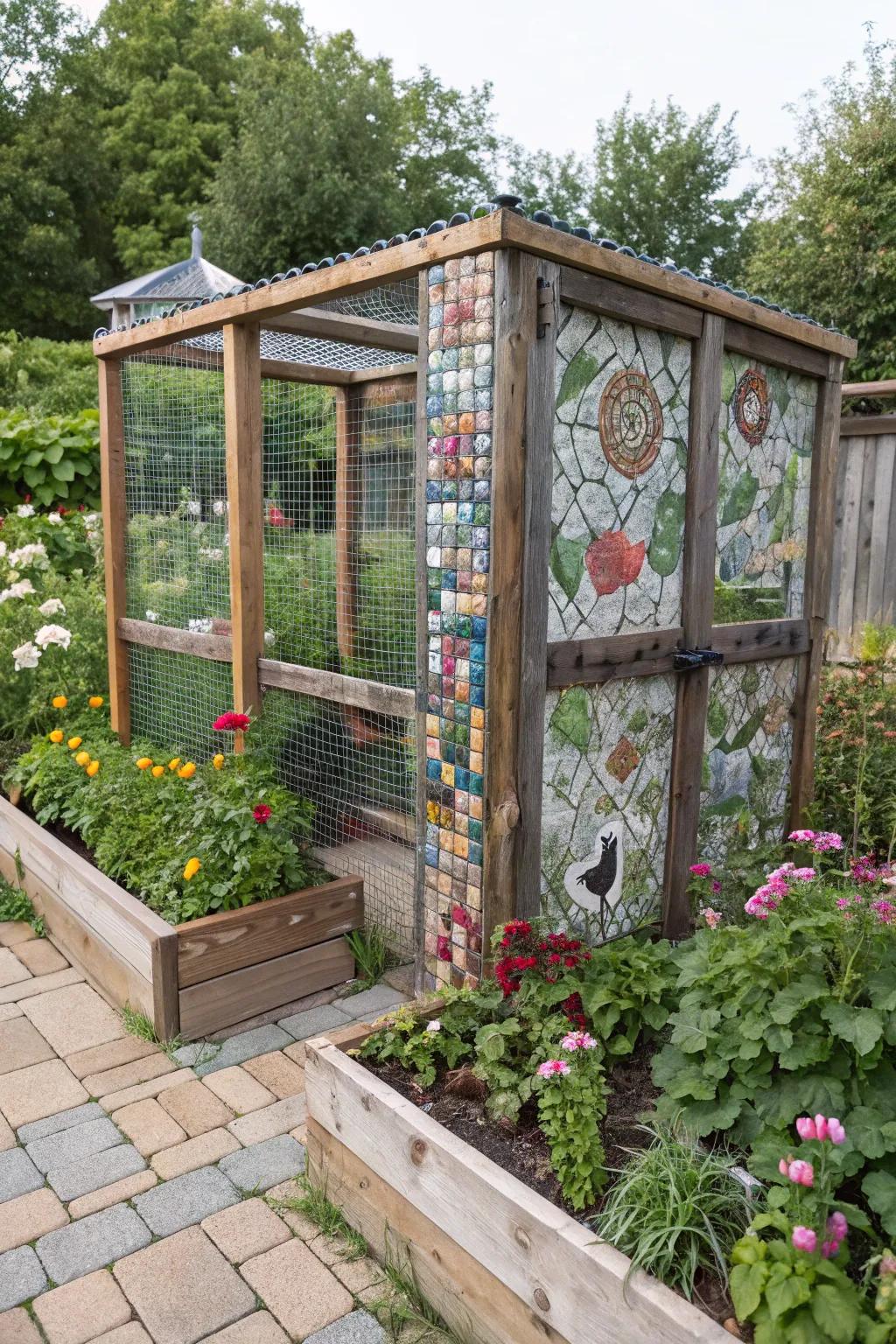
Adding mosaic tile accents to your crop cage can turn it into a work of art. It’s a personal touch that reflects your style and creativity.
Might be a good match:
- Outdoor Mosaic Tile Kits: Unleash your creativity by designing unique patterns with vibrant mosaic tile kits for your cages.
- Ceramic Tile Adhesive: Ensure your mosaic tiles stay secure with reliable and weather-resistant ceramic tile adhesive.
- Mosaic Tile Sealer: Protect your mosaic artwork with a durable sealer that enhances and preserves tile vibrancy.
4. Recycled Materials for an Eco-Twist

I love giving old materials a new life by using recycled materials for crop cages. It’s budget-friendly and good for the planet.
May just do the trick:
- Recycled Wood Planks: Enhance your crop cage with sustainable wood planks, adding durability while saving the planet.
- Reclaimed Metal Mesh: Implement sturdy, eco-friendly mesh for effective crop protection and environmental care.
- Upcycled Hinges and Hardware: Secure your crop cages sustainably with upcycled hardware, merging utility with eco-consciousness.
5. Customizable Modular Systems
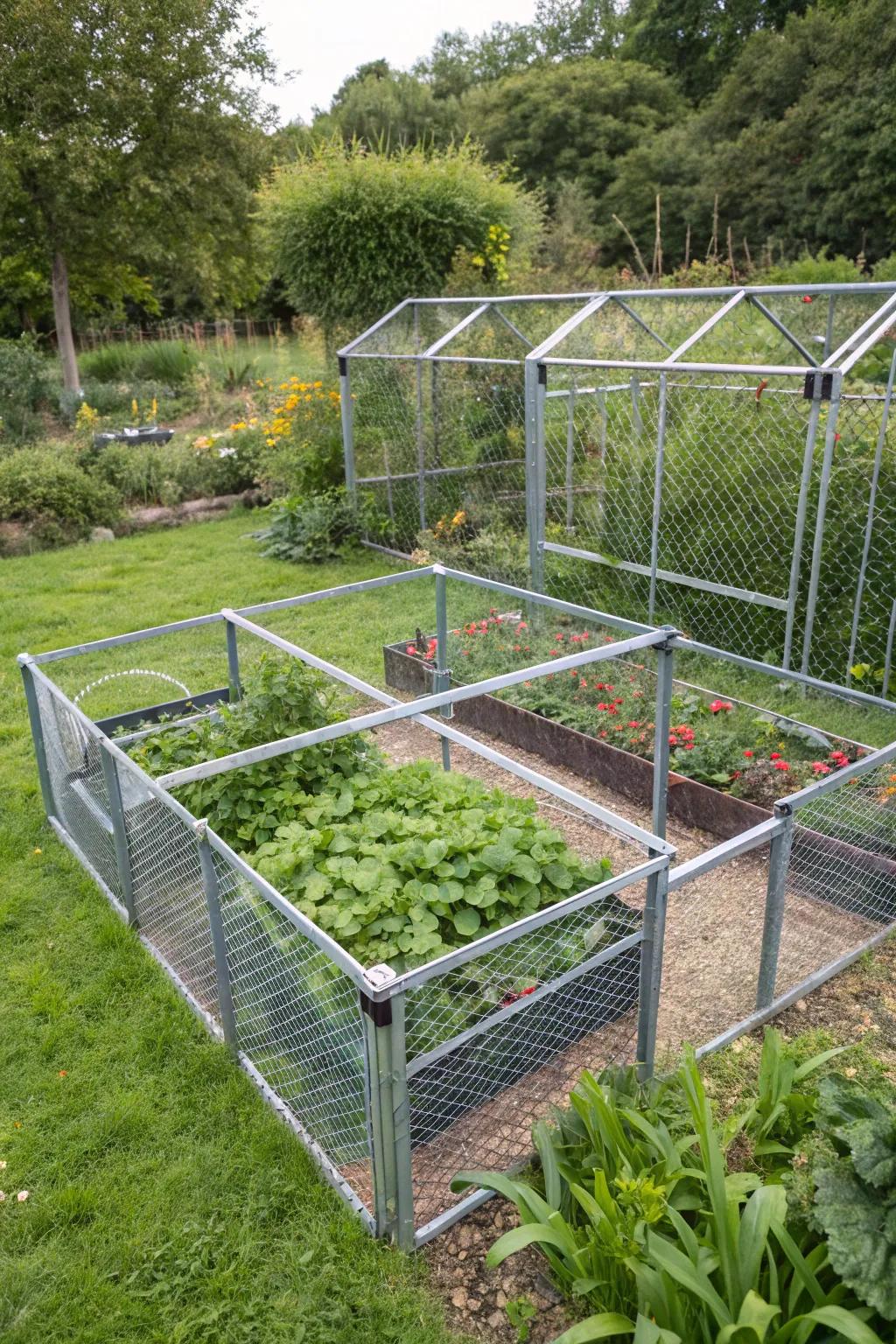
Modular crop cages offer flexibility. I love how I can adjust them to fit different areas of my garden, making them incredibly versatile.
You might give these a try:
- Adjustable Garden Crop Cages: Easily adapt to different garden needs with these versatile and adjustable crop cages.
- Modular Garden Protection Kits: Protect your plants effectively with customizable modular garden protection kits for varied sizes.
- Flexible Garden Enclosure Systems: Create the perfect garden environment with flexible, modular enclosure systems you can customize.
6. Convertible Roof Design
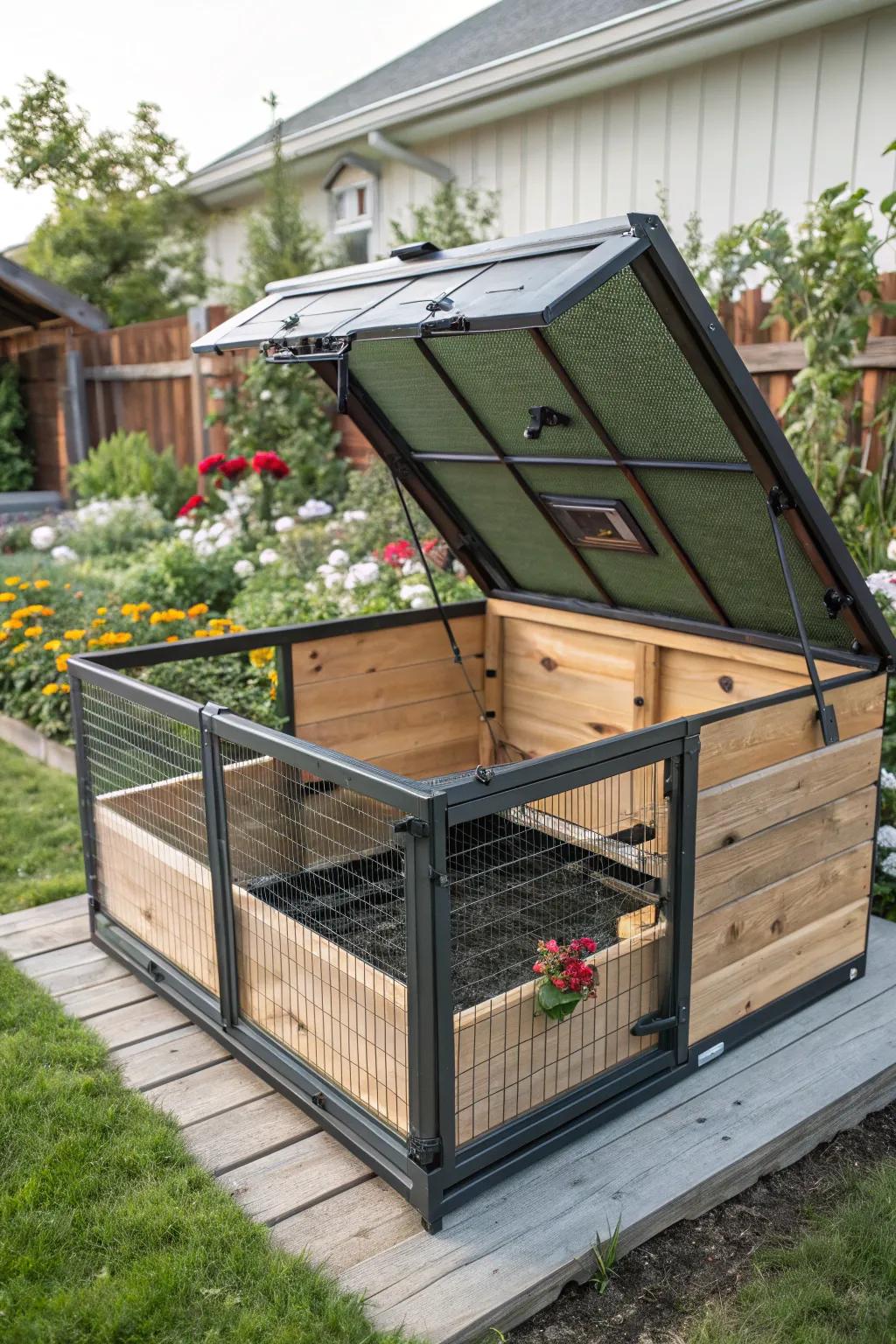
A convertible roof on a crop cage is a game-changer. It allows easy access and lets pollinators in when needed, which helps my garden thrive.
Check if these fit your needs:
- Adjustable Garden Hoop Frame: Optimize your convertible crop cage with adjustable hoop frames for quick and easy roofing access.
- Heavy-Duty Mesh Netting: Protect your crops while welcoming pollinators using this durable heavy-duty mesh netting.
- Weatherproof Hinges: Ensure smooth operation of your convertible roof with these reliable weatherproof hinges.
7. Convertible Greenhouse Hybrid
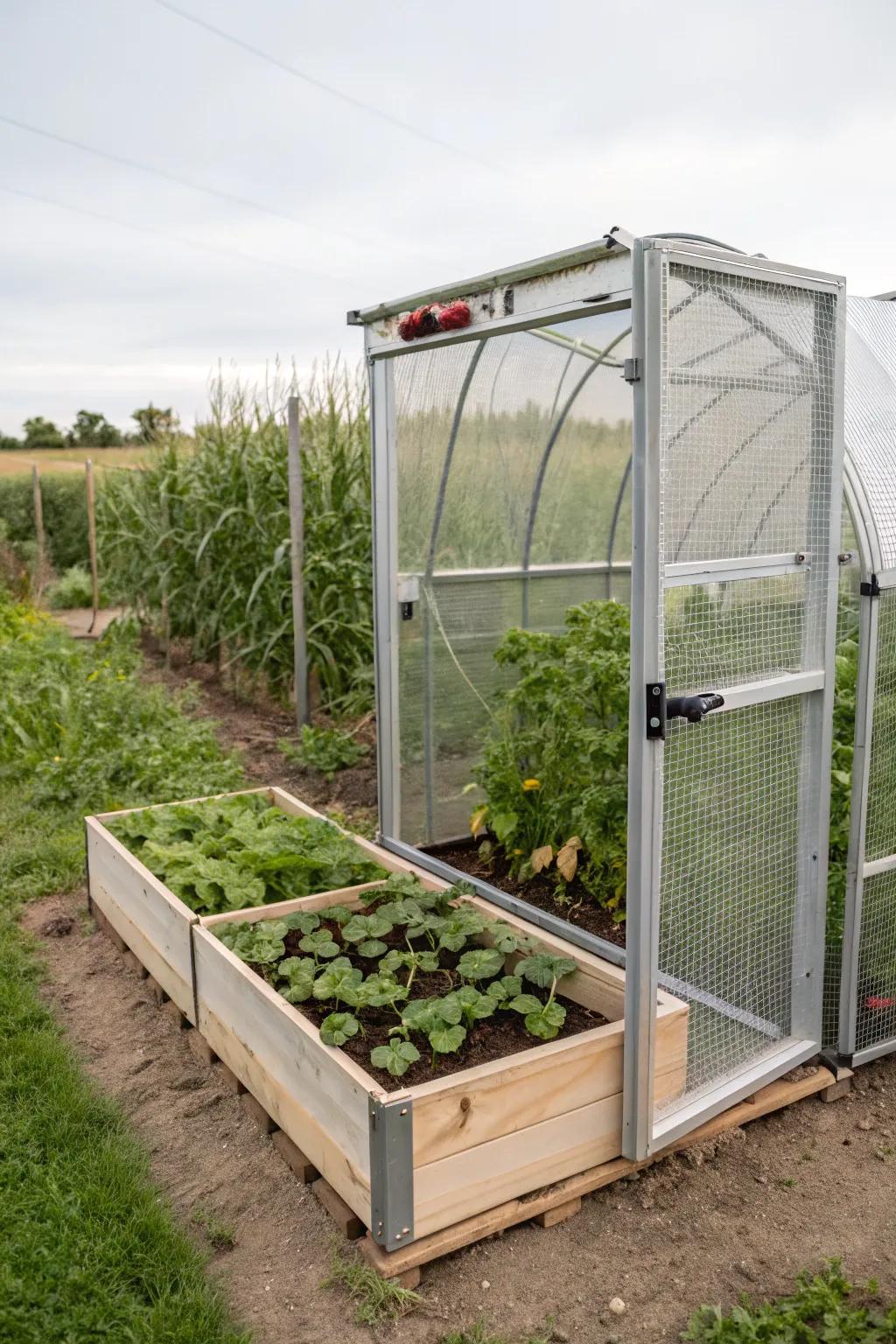
A crop cage that doubles as a mini greenhouse is fantastic for extending the growing season. It’s perfect for those unpredictable early frosts.
A few relevant products:
- Modular Greenhouse Panels: Enhance your crop cage with modular panels for flexible seasonal adjustments and enhanced growth.
- Adjustable Ventilation Panels: Install adjustable panels for optimal airflow, keeping your plants healthy in any weather.
- Weather-resistant Greenhouse Covers: Protect crops from frost with durable covers, extending your growing season effectively.
8. Rustic Wooden Frame

For a touch of rustic charm, I love using wooden frames for my crop cages. They blend beautifully with the garden and can be easily built from reclaimed wood.
Useful items to consider:
- Reclaimed Wood Planks: Create charming frames with reclaimed wood. Enhance your garden’s natural aesthetic effortlessly.
- Weatherproof Wood Sealant: Protect your wooden frames from the elements. Ensure lasting durability and rustic charm.
- Heavy Duty Chicken Wire: Secure your crops with durable chicken wire. Keep pests at bay while maintaining a rustic look.
9. Portable Flexibility with Hinged Tops
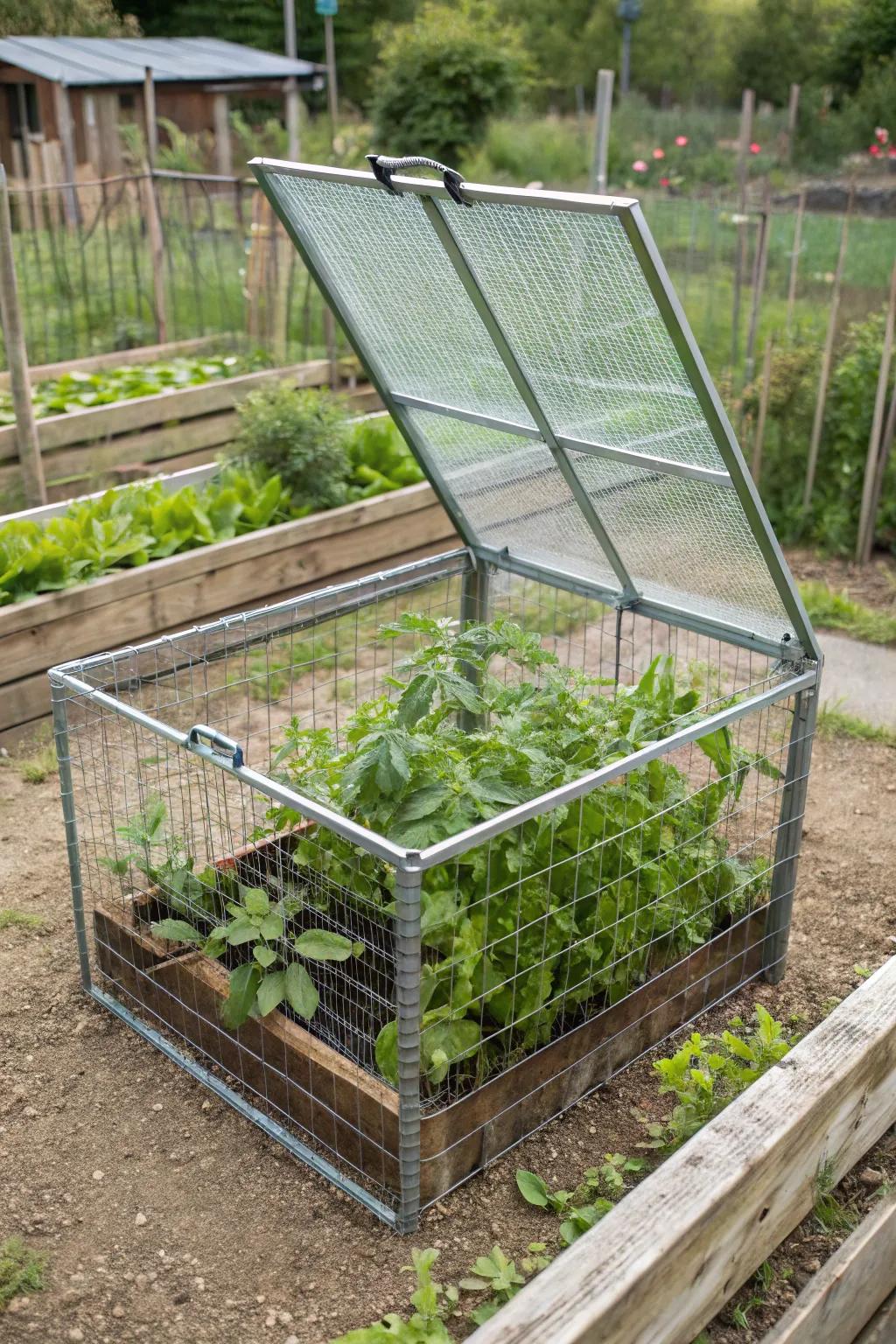
Cages with hinged tops are another favorite of mine. They’re incredibly practical for accessing plants without dismantling the entire structure.
Products that could assist:
- Adjustable Garden Crop Cage with Hinged Top: Enhance your gardening flexibility with an adjustable cage for easily accessing your plants.
- Portable Hinged Raised Bed Cover: Protect your plants effortlessly while maintaining easy access with this portable hinged cover.
- Weather-Resistant Crop Cage with Hinged Lid: Safeguard your crops against weather conditions using a sturdy hinged lid cage.
10. Multifunctional Raised Bed Cages
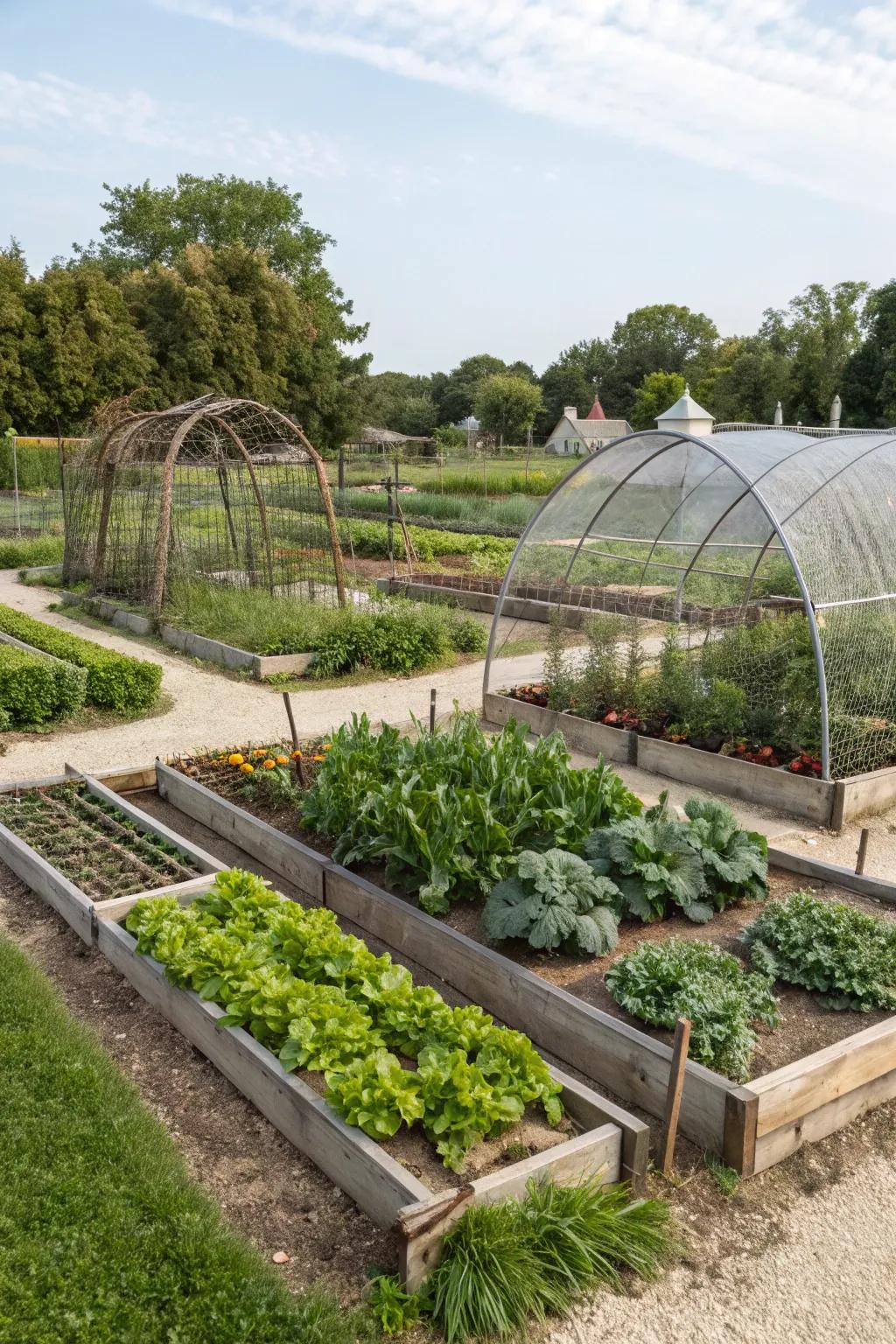
Combining a raised bed with a crop cage is genius! It keeps the plants organized and protected in one go. I’ve found it perfect for veggies like lettuce and carrots.
Check these products out:
- Raised Garden Bed Kit: Elevate your gardening experience with an easy-to-assemble raised bed kit. Perfect for veggies!
- Garden Crop Cage: Protect your plants with a durable crop cage. Keeps pests away while allowing light in.
- Garden Trellis Netting: Enhance growth with trellis netting. Ideal for supporting climbing plants in small spaces.
11. Vertical Crop Cages for Small Spaces

In small gardens, vertical crop cages are a must. They maximize space and are perfect for vining plants like peas and beans.
A few things you might like:
- Adjustable Height Garden Plant Supports: Maximize your garden space with adjustable supports, perfect for growing vining plants vertically.
- Stackable Garden Towers for Vertical Growing: Enhance your small garden with stackable towers suitable for peas and beans.
- Modular Vertical Garden Cages: Create a thriving vertical garden using modular cages ideal for small outdoor spaces.
12. Geodesic Dome Design
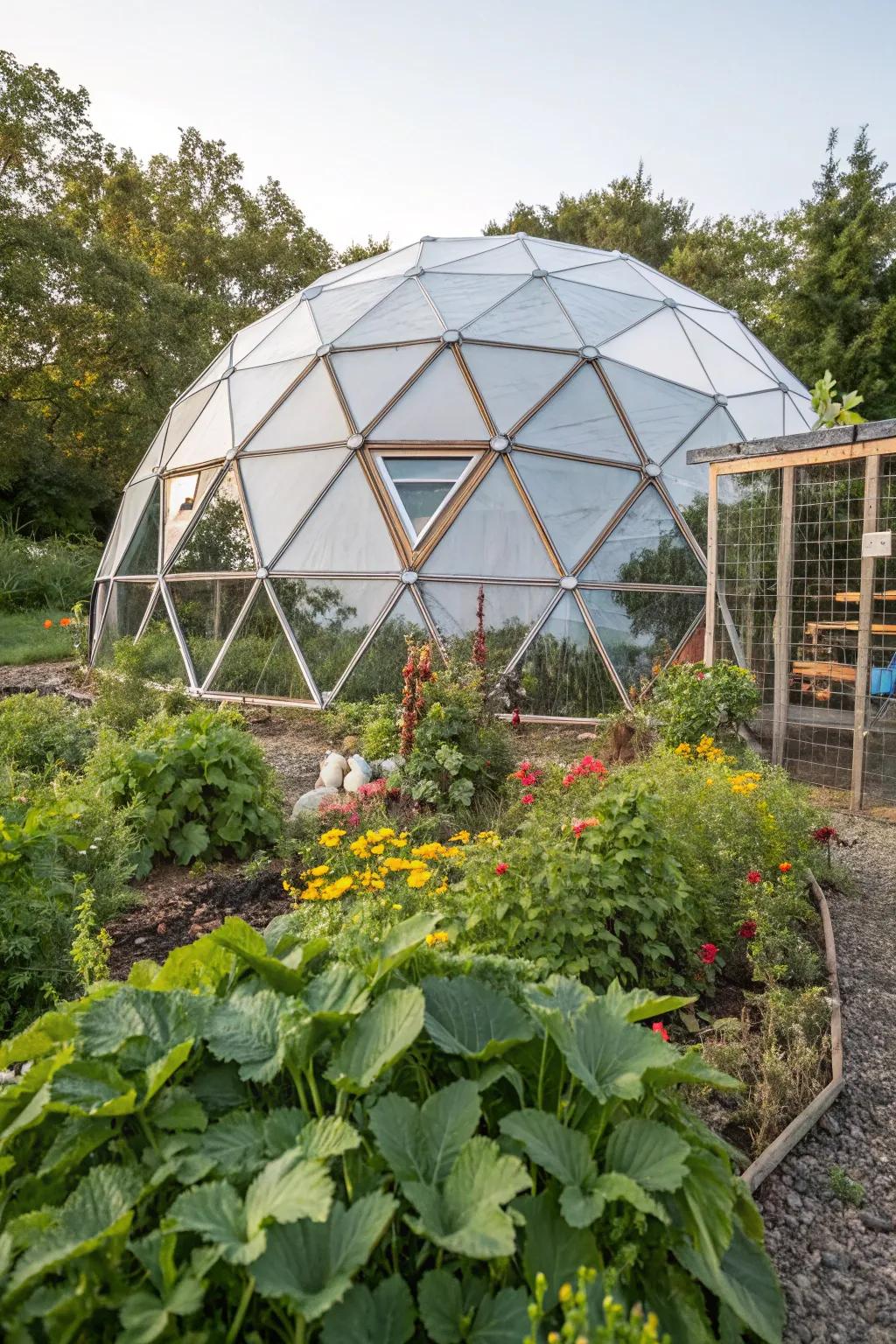
For a futuristic feel, a geodesic dome crop cage is both strong and visually striking. It’s a great conversation piece and provides excellent protection.
Consider these options:
- Geodesic Dome Kit: Build your own modern crop cage with this sturdy and easy-to-assemble geodesic dome kit.
- Weatherproof Dome Cover: Protect your crops with a durable weatherproof cover designed for geodesic domes.
- Garden Netting for Domes: Secure your garden with versatile netting, perfect for keeping pests away from dome structures.
13. Transparent Polycarbonate Panels
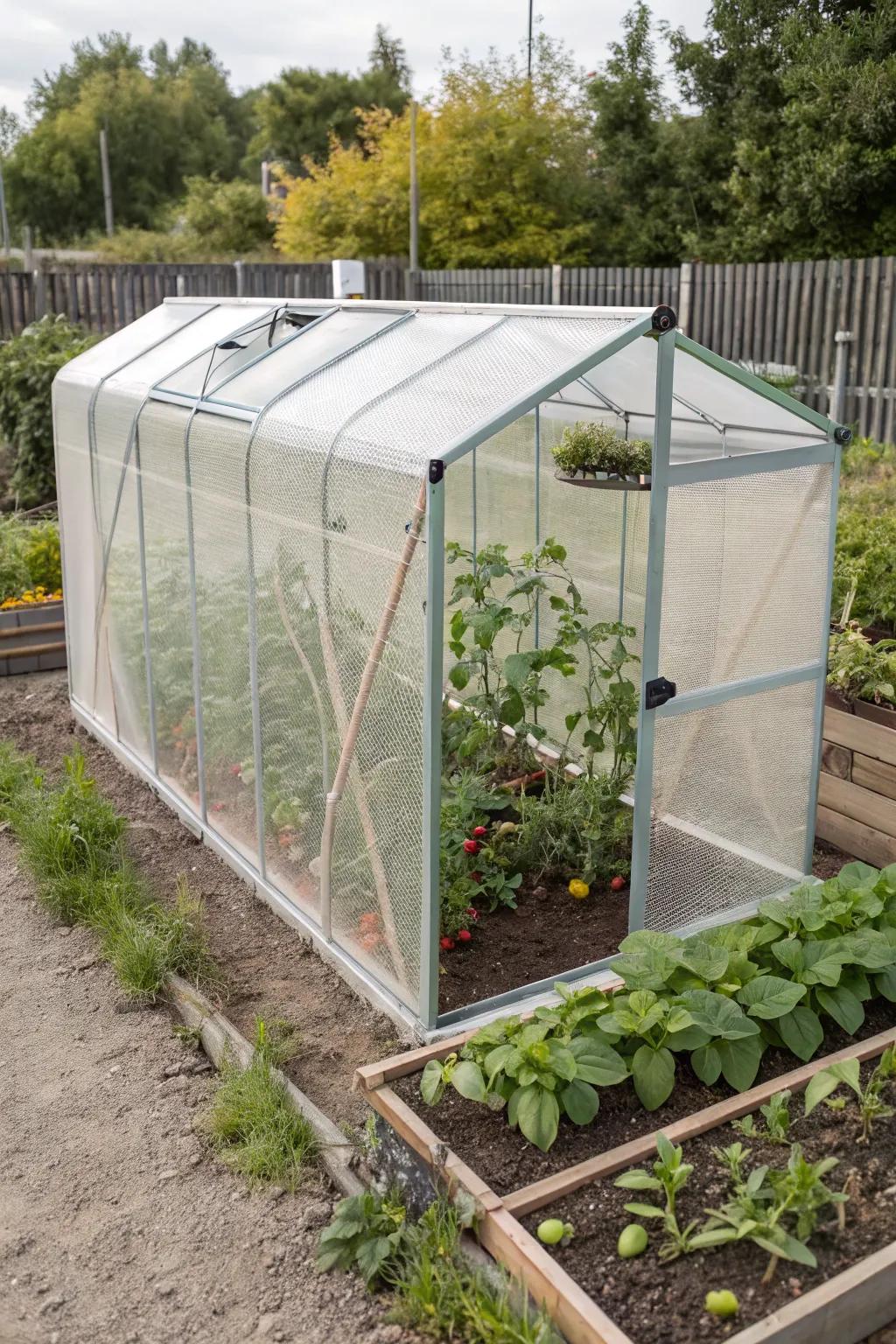
Using polycarbonate panels provides excellent insulation while letting through plenty of light. They’re a top choice for year-round gardening.
These products might help:
- Polycarbonate Greenhouse Panels: Enhance your garden’s insulation and light exposure with durable polycarbonate panels today.
- UV-Resistant Polycarbonate Sheets: Protect your crops with UV-resistant polycarbonate sheets, ensuring light and weather resilience.
- Insulated Polycarbonate Roofing: Ensure optimal insulation and light entry for year-round gardening with quality polycarbonate roofing.
14. Pop-Up Crop Cage
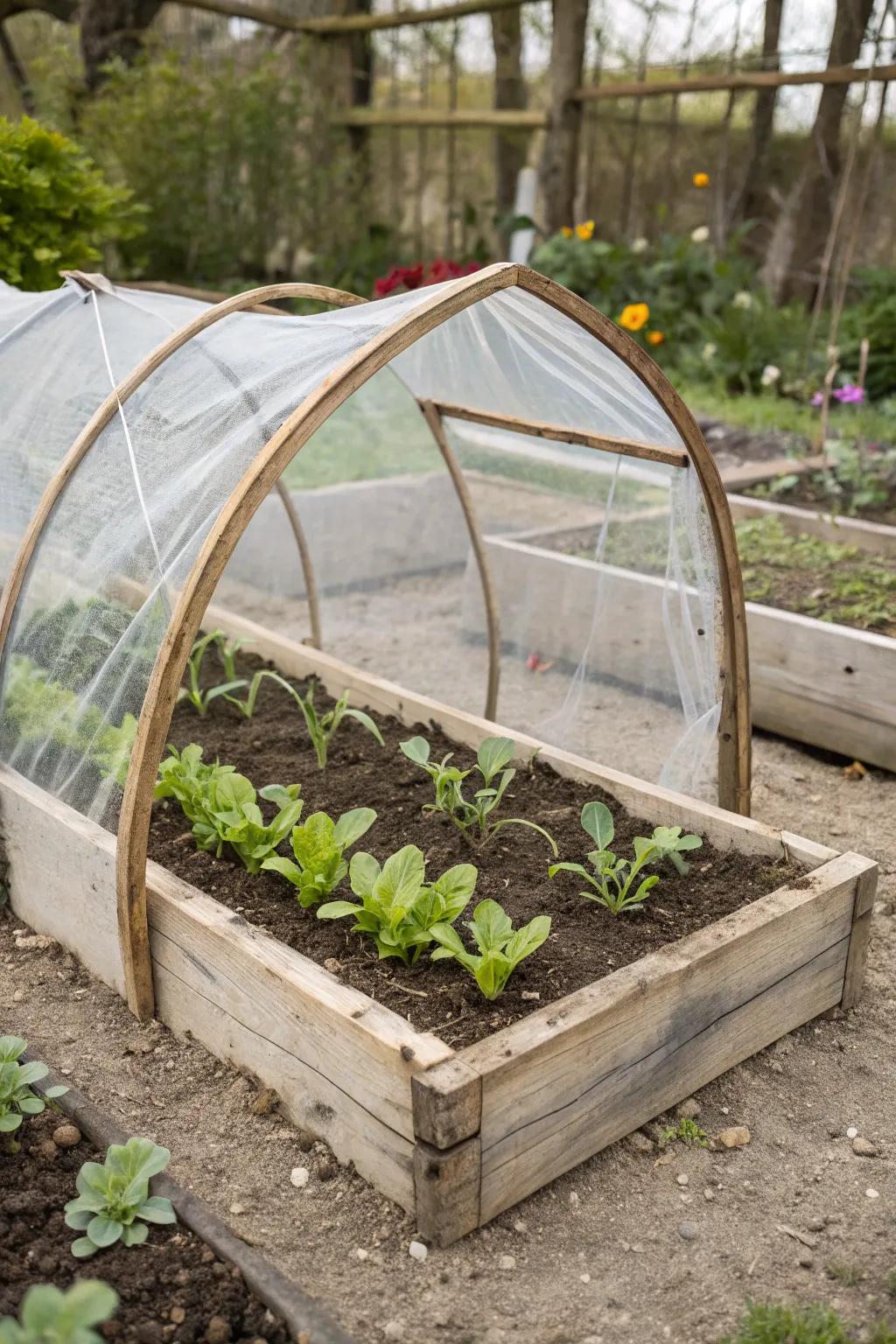
When I’m in need of a quick solution, pop-up crop cages are a lifesaver. They’re portable, easy to set up, and perfect for temporary protection.
Some handy options:
- Portable Pop-Up Garden Cage: Protect your plants effortlessly with this portable pop-up cage. Quick, easy, and efficient setup!
- Instant Mesh Plant Cover: Shield your crops instantly with a durable mesh cover. Simple to install and transport!
- Foldable Crop Protection Tent: Keep your garden safe with this foldable protection tent. Lightweight and hassle-free handling!
15. Elegant Metal Frame
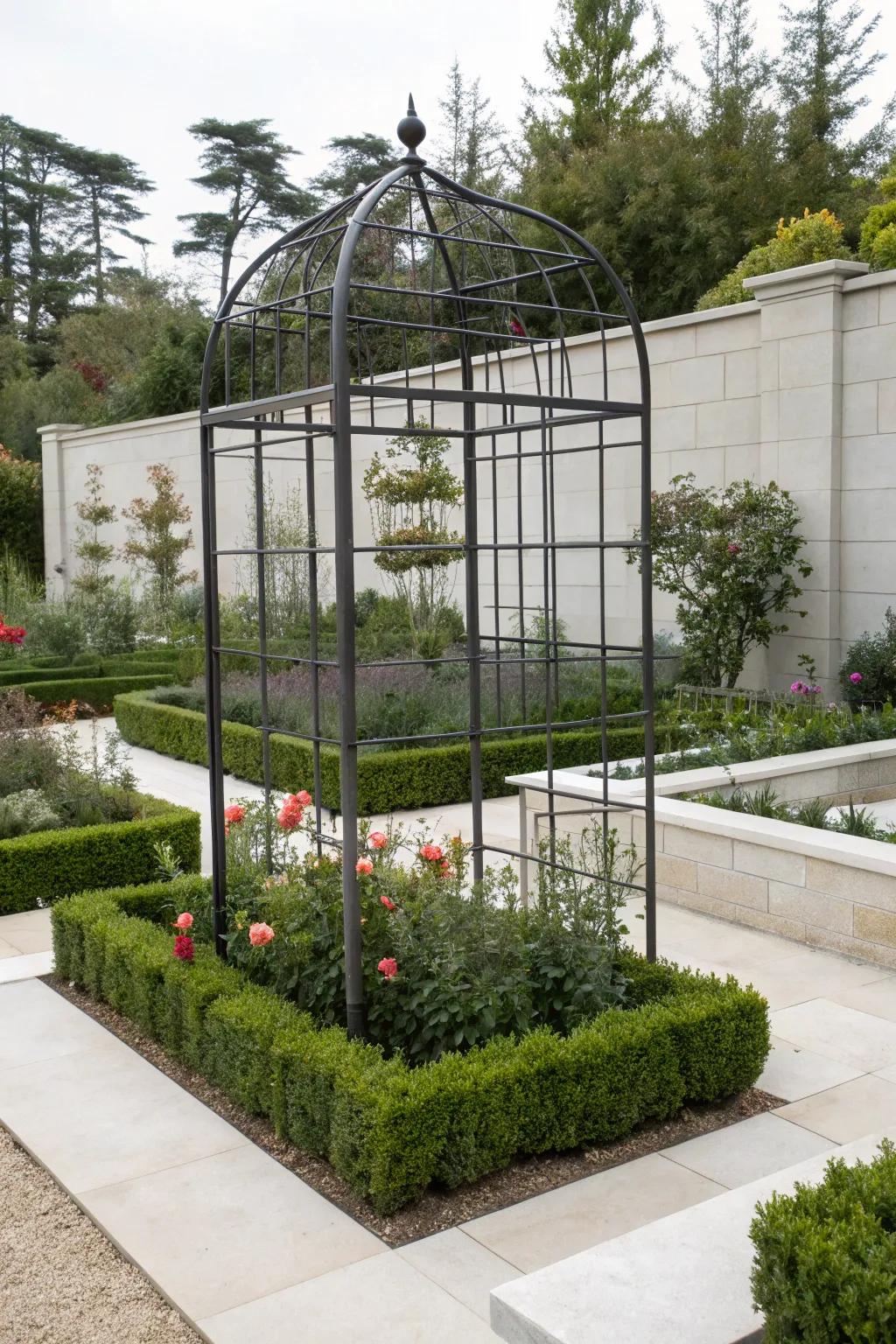
For a more durable option, I recommend a metal frame crop cage. They’re sturdy, withstand the elements, and can add an elegant touch to your garden.
Items that may come in handy:
- Heavy-Duty Metal Garden Cage: Enhance your garden with a robust metal cage, blending durability with elegance effortlessly.
- Decorative Metal Plant Trellis: Support your plants elegantly with a decorative metal trellis, adding a touch of sophistication.
- Outdoor Metal Arbor with Gate: Create a stunning garden entrance with this elegant metal arbor, combining style and strength.
16. Transparent Acrylic Panels
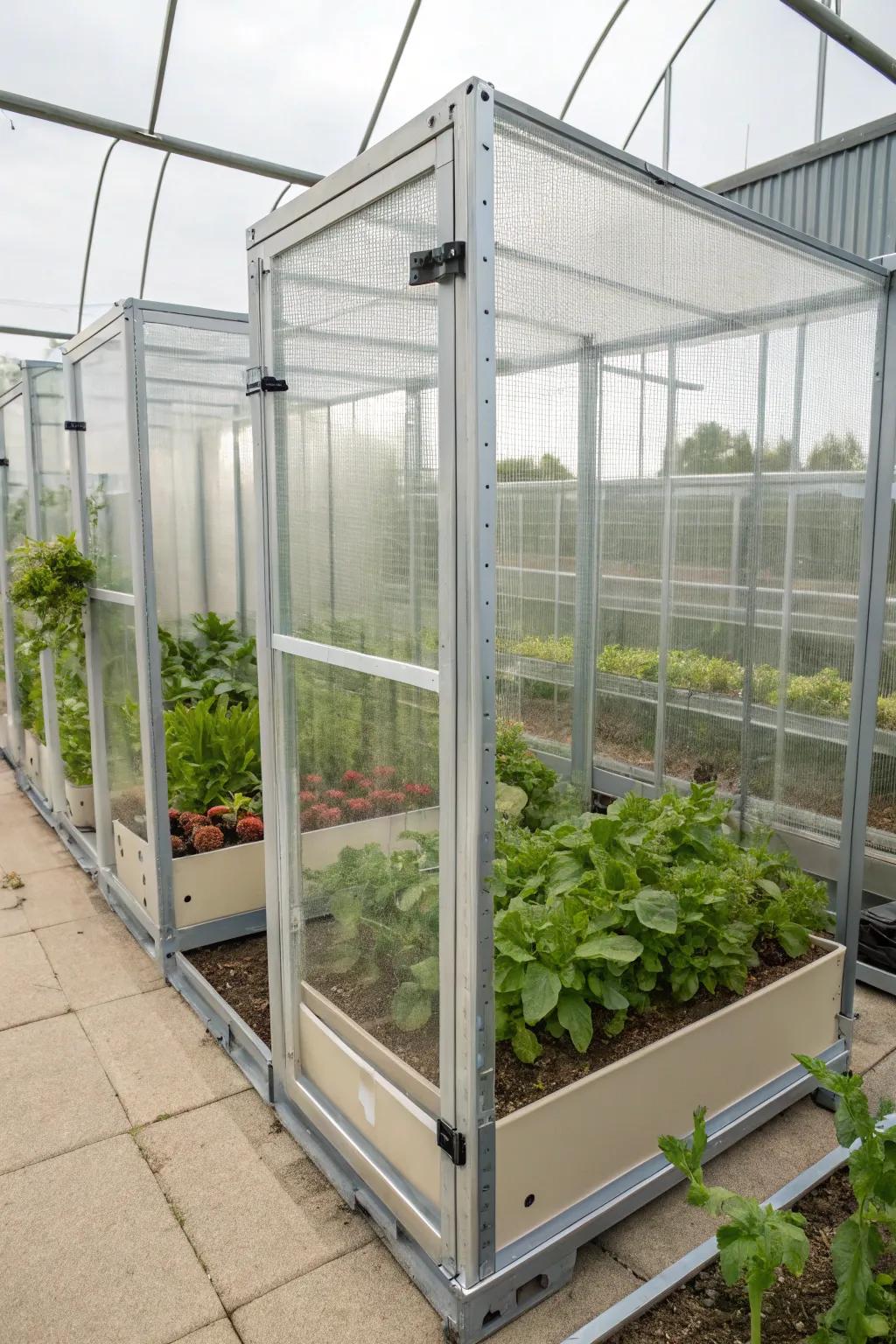
For a modern twist, transparent acrylic panels make for unique crop cages. They offer protection while giving a clear view of your plants.
Try these:
- Clear Acrylic Sheets for DIY Projects: Craft your own modern crop cages with these versatile, durable clear acrylic sheets.
- UV-Resistant Acrylic Panels: Protect your plants with UV-resistant acrylic panels that offer clarity and durable protection.
- Transparent Acrylic Greenhouse Panels: Enhance plant growth with transparent panels that provide excellent visibility and shelter.
17. Creative Bamboo Structures
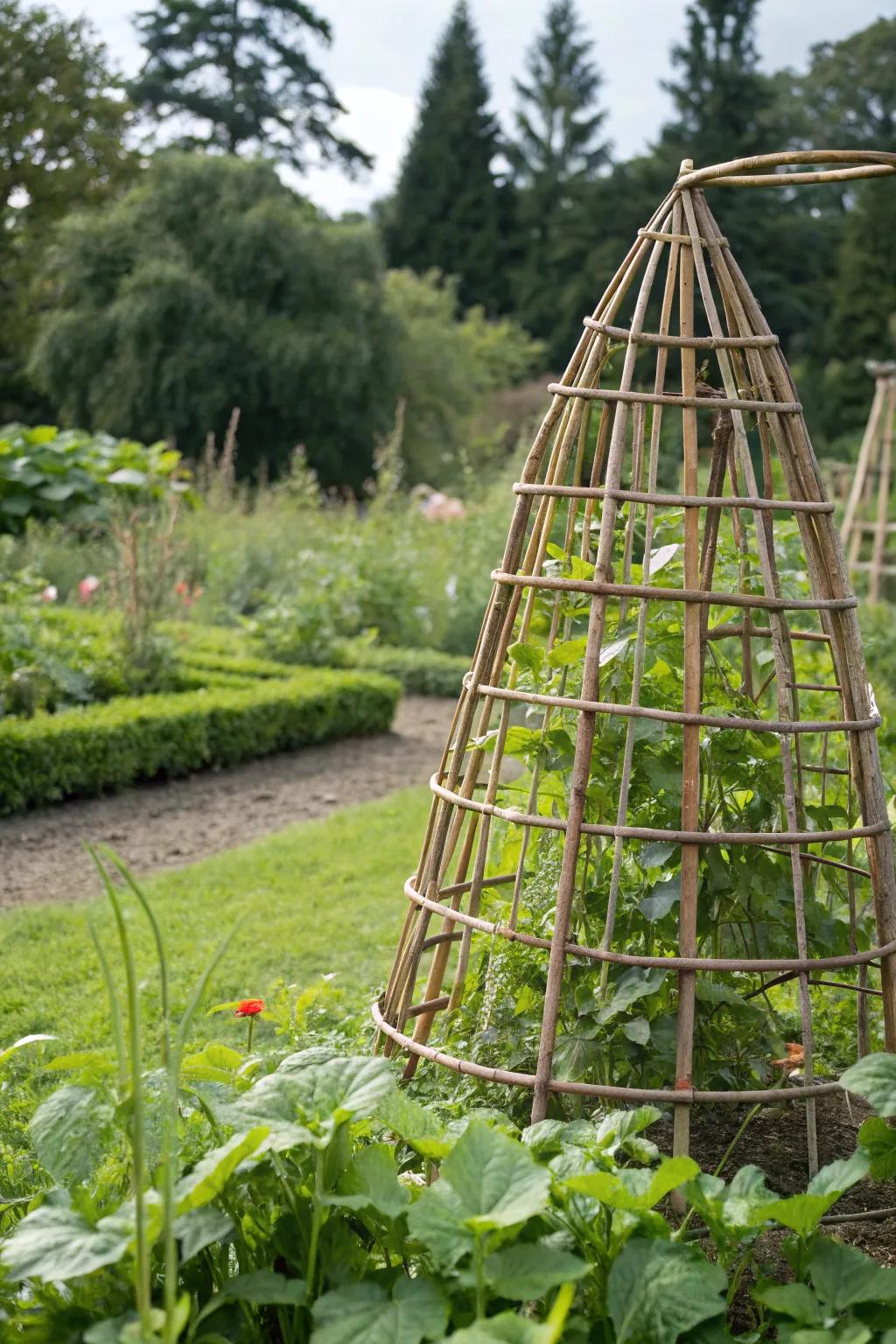
For a sustainable option, I love using bamboo to craft crop cages. It’s eco-friendly, durable, and adds a natural look to the garden.
A few helpful options:
- Eco-Friendly Bamboo Stakes: Try these durable bamboo stakes to support your crop cages for a natural look.
- Natural Garden Twine: Secure your bamboo structures with this reliable garden twine for added stability.
- Bamboo Garden Fencing: Enhance your garden with this decorative bamboo fencing, adding charm and function.


